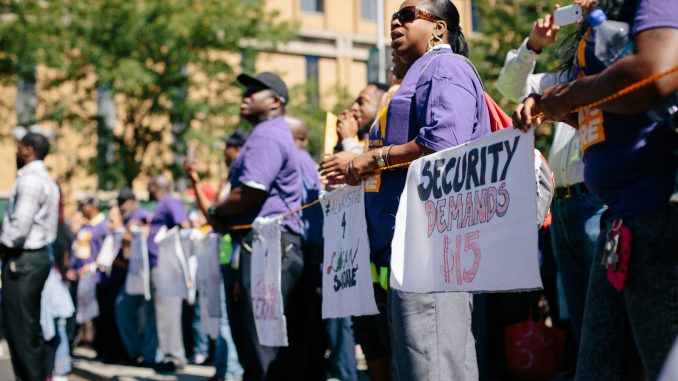
For Tina Ngo, activism is a “part of [her] identity.”
“I don’t see it as a hobby,” said Ngo, a junior political science major. “I don’t see it as something whenever I’m free I can attend to. … It’s how I see the world.”
Ngo is a member of both Temple’s 15 Now chapter, an organization fighting for a $15 minimum wage with chapters nationwide, and Stadium Stompers, a group formed last year in opposition of the proposed on-campus football stadium.
She said Temple is a “hotspot” for student activism because of controversy over issues like the stadium and the resources Temple offers victims of sexual assault.
In Fall 2016, Temple’s campus has been the host of multiple protests, like the Stadium Stompers’ disruption of the golf cart parade, which was held in honor of Homecoming Week, on Friday.
Charlie Leone, director of Campus Safety Services, said Temple’s size and proximity to Broad Street are factors that explain why activism is prevalent on Main Campus.
He added that handling activism on campus is a balance between allowing people to exercise their First Amendment rights and preventing protestors from hindering the rights of others, like walking in public areas.
Each protest is handled on a case-by-case basis depending on factors like the sensitivity of the protest’s subject matter, its location and how many people are involved, he said.
“We train to deal with crowds and things of that nature, but a lot of it is about being fluid,” Leone added. “If something should kick off, you have to be ready to keep everybody safe. It can get pretty heated out there.”
Leone, who has worked in CSS since 1985, said students “have always been involved,” but he’s seen more activism on campus recently because of discussion about the stadium.
Jared Dobkin, a senior political science and geography and urban studies major, has been a member of Stadium Stompers since the group’s first meeting in November last year. He said the interaction between residents of the North Philadelphia community and students makes the group a “wonderful organization.”
“This university was built to primarily serve the community. That was Russell Conwell’s vision,” he said. “It is a community and student group united to seek the change they want to see in this neighborhood and in this university.”
Protests and marches, Ngo said, are not “all there is to activism,” although they may be the only aspects bystanders see. Preparation for activism events begins with attending preliminary meetings and reaching out to other organizations in hopes of collaboration.
Dobkin said activism can’t be achieved “through one means.”
Dobkin is also a member of Temple’s 15 Now chapter and Babel, Temple’s student poetry collective. He said he sees spoken word as a vehicle to convey ideas that may be overlooked otherwise.
“A lot of [Babel’s] art is radical in that nature. [It] is seeking change and is working for activism,” Dobkin added. “My family in Babel are seeking to have their voices heard.”
Uniting with other members through “solidarity” is what Dobkin said motivates him to continue participating in activism.
Dobkin, who grew up in Germantown, said he was always interested in activism, but did not have an “outlet” to act on it before coming to college — a stage in his life that he coined as a “new time of discovery.”
Ngo said activism on a college campus is a chance for her to use her “one voice” to make a difference.
“It’s about leaving the classroom and finding how real world issues tie in with what you’re learning on campus and how you can be a part of the change that’s taking place,” Ngo said. “It’s about how they apply to real life.”
Grace Shallow can be reached at grace.shallow@temple.edu.






Be the first to comment